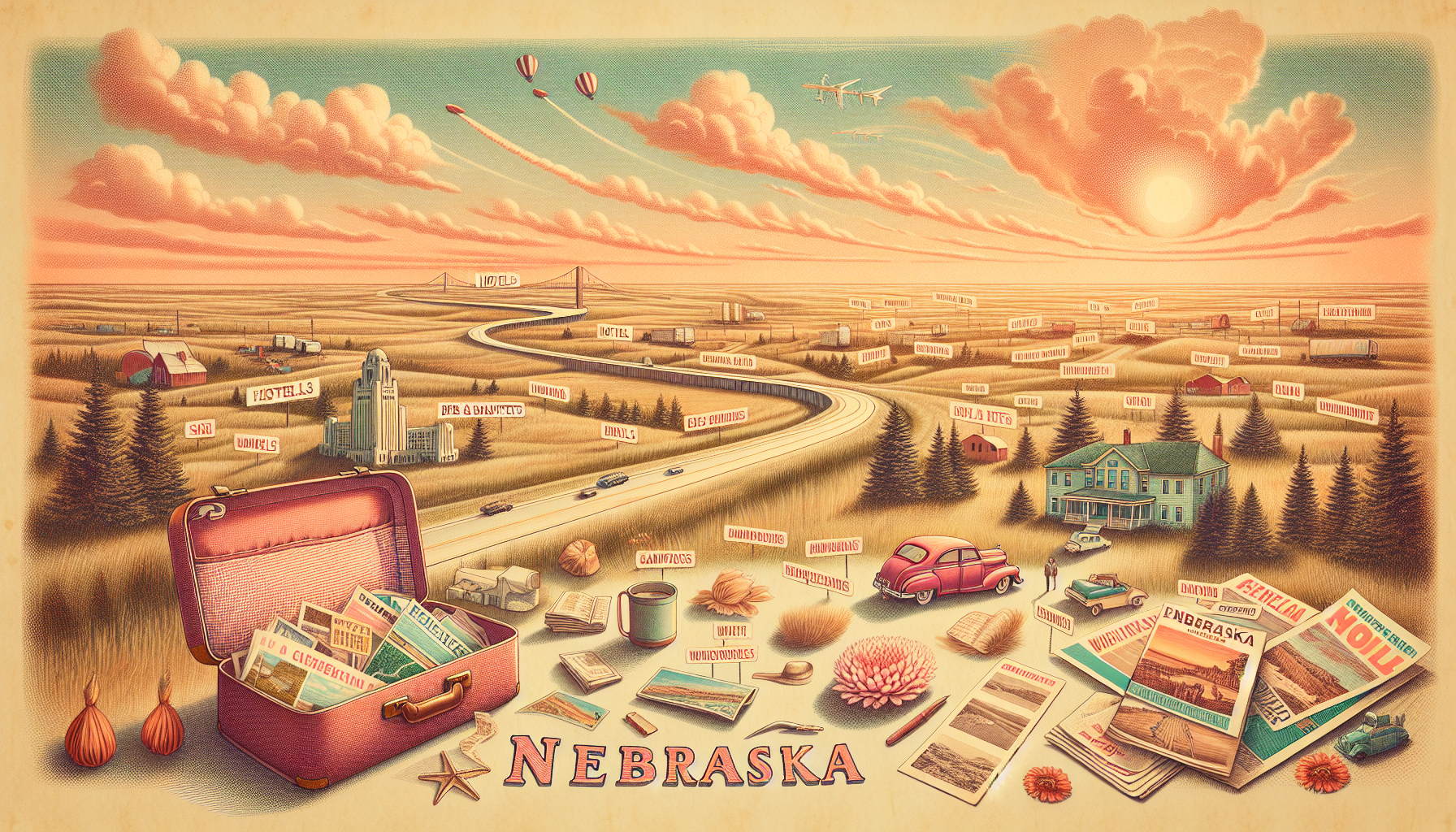Platte River Ecosystem and its Importance

Traveling through Nebraska offers numerous opportunities to appreciate the Great Plains and their unique ecosystems. Among these, the Platte River ecosystem stands out as a vital component of the state's natural heritage. Stretching 310 miles within Nebraska, the Platte River is a vital habitat for a wide variety of flora and fauna. The river's ecosystem plays a crucial role in supporting over 600 species of plants and animals, many of which are found nowhere else in the world.
The Platte River and its associated wetlands support an impressive array of birdlife, including the iconic Sandhill Crane. Each year, hundreds of thousands of these majestic birds migrate through the Platte River Valley, specifically through areas such as the Rowe Sanctuary near Kearney, Nebraska, and the Platte River State Park near Louisville, Nebraska. These congregations are among the largest on the planet and attract visitors from around the globe.
The Platte River's unique characteristics make it an ideal habitat for numerous species of fish, including the endangered Pallid Sturgeon and the threatened Flathead Chub. The river's habitats, including sandbars, backwaters, and mainstem channels, support a diverse array of fish species. To conserve and manage the Platte River's fisheries, the Nebraska Game and Parks Commission conducts regular research and monitoring efforts in collaboration with other federal and state agencies.
A key component of the Platte River ecosystem is its network of wetlands, including sandhill wet meadows and riverine oxbow wetlands. These wetlands provide essential habitat for numerous species of plants and animals, while also serving as natural filters, helping to maintain the river's water quality. One notable example is the Big Bend Reach, located near Fremont, Nebraska. This stretch of the river features extensive sandbar complexes, where willow and cottonwood trees thrive alongside a diverse array of wildlife.
Changes in land use, including urbanization and intensive agriculture, pose significant threats to the Platte River ecosystem. Habitat destruction and degradation have led to a decline in the populations of numerous species that depend on the river and its associated wetlands. In response to these concerns, the Platte River Recovery Implementation Program was established in 2007. This multi-agency effort aims to conserve and recover four listed species – the whooping crane, pallid sturgeon, piping plover, and least tern – while maintaining the Platte River's commercial and recreational uses.
The Platte River's unique ecosystem is influenced by a combination of geological, hydrological, and ecological factors. Geologically, the river's valley is characterized by glacial deposits of sand and gravel, which provide a unique substrate for plant growth. Hydrologically, the Platte River's flow is regulated by a complex network of dams, reservoirs, and irrigation canals, which affect the river's hydrology and alter the habitats of many aquatic species.
Efforts to conserve the Platte River ecosystem continue to evolve as new research and information become available. The Nebraska Department of Natural Resources and the U.S. Fish and Wildlife Service collaborate on a range of initiatives, including habitat restoration and research programs. Private landowners and conservation organizations, such as the Nature Conservancy, also play a critical role in protecting the Platte River's natural resources.
In conclusion, the Platte River ecosystem is a unique and vital component of Nebraska's natural heritage. Ongoing conservation efforts, including habitat restoration and species management, are essential to protecting this vital ecosystem and all the species that depend on it.
The Platte River and its associated wetlands support an impressive array of birdlife, including the iconic Sandhill Crane. Each year, hundreds of thousands of these majestic birds migrate through the Platte River Valley, specifically through areas such as the Rowe Sanctuary near Kearney, Nebraska, and the Platte River State Park near Louisville, Nebraska. These congregations are among the largest on the planet and attract visitors from around the globe.
The Platte River's unique characteristics make it an ideal habitat for numerous species of fish, including the endangered Pallid Sturgeon and the threatened Flathead Chub. The river's habitats, including sandbars, backwaters, and mainstem channels, support a diverse array of fish species. To conserve and manage the Platte River's fisheries, the Nebraska Game and Parks Commission conducts regular research and monitoring efforts in collaboration with other federal and state agencies.
A key component of the Platte River ecosystem is its network of wetlands, including sandhill wet meadows and riverine oxbow wetlands. These wetlands provide essential habitat for numerous species of plants and animals, while also serving as natural filters, helping to maintain the river's water quality. One notable example is the Big Bend Reach, located near Fremont, Nebraska. This stretch of the river features extensive sandbar complexes, where willow and cottonwood trees thrive alongside a diverse array of wildlife.
Changes in land use, including urbanization and intensive agriculture, pose significant threats to the Platte River ecosystem. Habitat destruction and degradation have led to a decline in the populations of numerous species that depend on the river and its associated wetlands. In response to these concerns, the Platte River Recovery Implementation Program was established in 2007. This multi-agency effort aims to conserve and recover four listed species – the whooping crane, pallid sturgeon, piping plover, and least tern – while maintaining the Platte River's commercial and recreational uses.
The Platte River's unique ecosystem is influenced by a combination of geological, hydrological, and ecological factors. Geologically, the river's valley is characterized by glacial deposits of sand and gravel, which provide a unique substrate for plant growth. Hydrologically, the Platte River's flow is regulated by a complex network of dams, reservoirs, and irrigation canals, which affect the river's hydrology and alter the habitats of many aquatic species.
Efforts to conserve the Platte River ecosystem continue to evolve as new research and information become available. The Nebraska Department of Natural Resources and the U.S. Fish and Wildlife Service collaborate on a range of initiatives, including habitat restoration and research programs. Private landowners and conservation organizations, such as the Nature Conservancy, also play a critical role in protecting the Platte River's natural resources.
In conclusion, the Platte River ecosystem is a unique and vital component of Nebraska's natural heritage. Ongoing conservation efforts, including habitat restoration and species management, are essential to protecting this vital ecosystem and all the species that depend on it.
